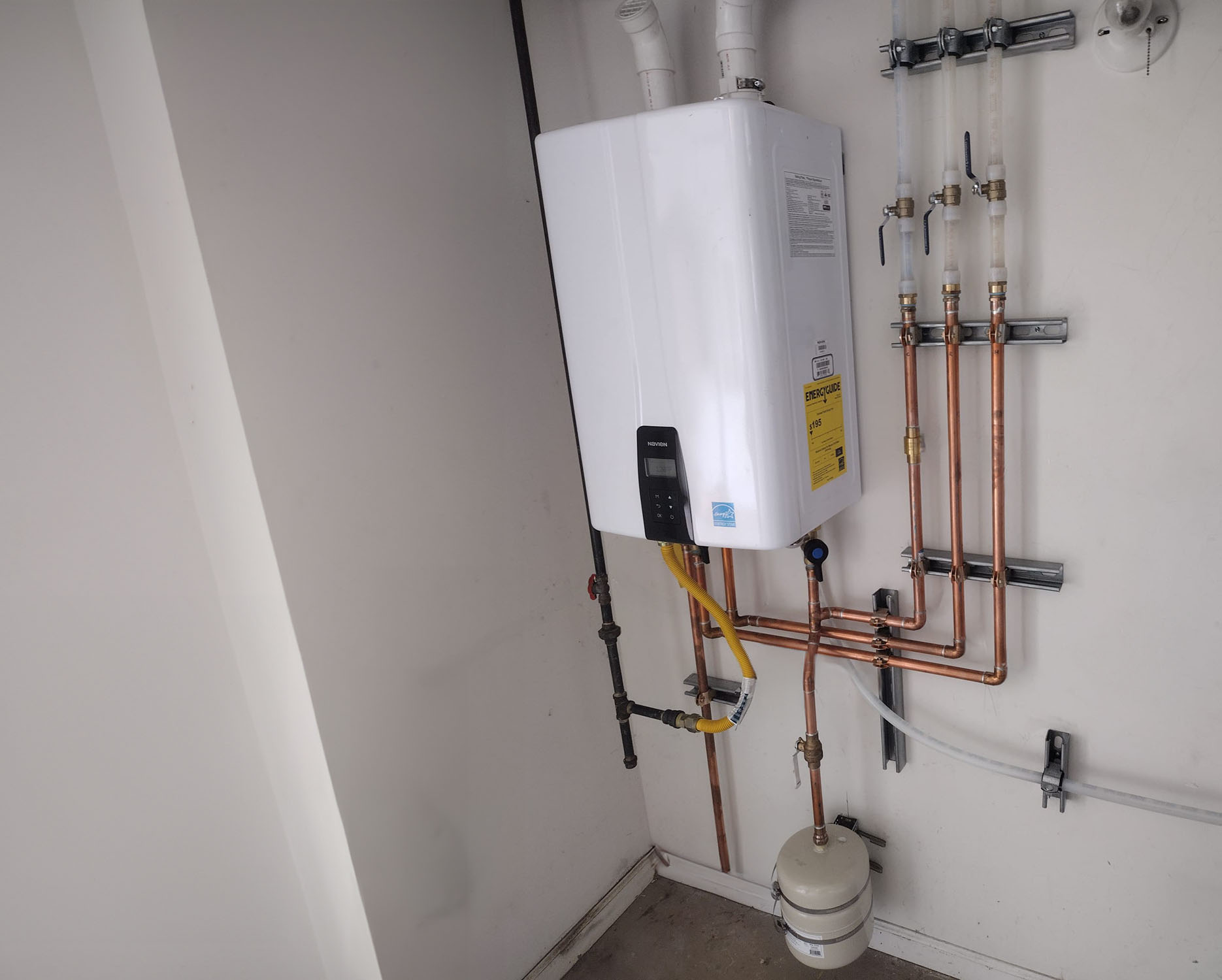

Energy-saving Benefits
Your trusted partner for professional home services. Quality workmanship, guaranteed satisfaction.




- HEP
- Energy-saving Benefits
Energy-saving Benefits | Tankless Water Heater Install | Plumbing | Reliance
Imagine opening the tap and enjoying endless, piping-hot water while your energy bills shrink month after month. HEP’s certified plumbers make that possible for Reliance homeowners with expert tankless water heater install services that replace bulky, standby tanks with sleek, on-demand technology. Because water is only heated when you need it, you can cut standby heat loss, free up storage space, and gain the peace of mind that comes from a system designed to last nearly twice as long as a conventional heater.
From the first consultation to the final test run, we focus on efficiency, safety, and transparency. Our team sizes your unit for peak performance, handles permitting, and hauls away the old tank—all while offering upfront pricing and guidance on rebates that can offset the cost. Trust HEP to deliver a smooth upgrade that adds comfort, value, and sustainable savings to your Reliance home.
FAQs
How does a tankless water heater save energy compared to a traditional storage-tank model?
Storage heaters keep 40–80 gallons of water hot 24/7, so they constantly cycle on to counter standby heat loss. A tankless unit only turns on when a tap calls for hot water. This on-demand operation can cut water-heating energy use by 25–40 %, translating to lower monthly utility bills and a smaller carbon footprint for your Reliance home.
Will I ever run out of hot water with a tankless system?
A properly sized tankless heater delivers a continuous flow of hot water, so you won’t "run out" the way a storage tank can. The key is selecting a unit with a flow-rate capacity that matches your peak household demand (showers, dishwasher, and laundry running simultaneously). During your consultation, our technicians measure this demand and recommend a model that keeps every fixture supplied without temperature drops.
What size tankless unit do I need for my home in Reliance?
Sizing is based on two factors: (1) the maximum gallons-per-minute (GPM) your home may require at once, and (2) the temperature rise needed—from incoming cold water to your desired hot-water setting. We calculate GPM by adding up the fixtures you typically use simultaneously, then select a unit whose rated GPM at the required temperature rise meets or exceeds that total. For most three-bedroom homes in Reliance, that ranges from 7 to 9 GPM; larger homes may need 11 GPM or a multi-unit cascade.
Does installing a tankless water heater require major changes to my plumbing or gas lines?
In most cases, installation is straightforward. The compact unit mounts on a wall near your existing water and gas lines. We may upgrade the gas line to a larger diameter to support the higher BTU input and add a dedicated 120-V electrical outlet for the electronic ignition. Condensing models also need PVC venting and a condensate drain. Our licensed plumbers handle all modifications, obtain any necessary Reliance permits, and leave your home as neat as they found it.
What maintenance is required to keep my tankless heater running efficiently?
Tankless systems have longer service lives (up to 20 years) but they still need annual maintenance. We flush the heat exchanger with a food-grade descaling solution to remove mineral buildup, inspect and clean the inlet filter, test safety valves, and verify combustion settings. Homes with hard water may benefit from a whole-house water softener or more frequent flushing. Regular service preserves efficiency, prevents error codes, and maintains warranty coverage.
Are there rebates or incentives for installing an energy-efficient tankless water heater in Reliance?
Yes. Many utility companies and state programs offer cash rebates—often $200–$500—for ENERGY STAR® certified tankless units. Federal tax credits under the Inflation Reduction Act can cover 30 % of the project cost, up to $600, if the unit meets ≥0.95 UEF. Our team stays current on all available incentives, prepares the documentation, and guides you through the application process so you capture every possible savings.